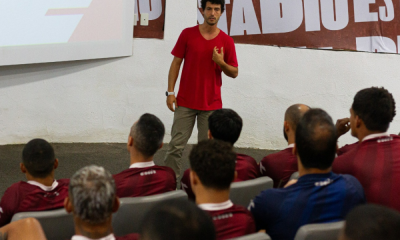Interviews
Exclusive Q&A with Sujit Unni, Chief Technology Officer at Paysafe
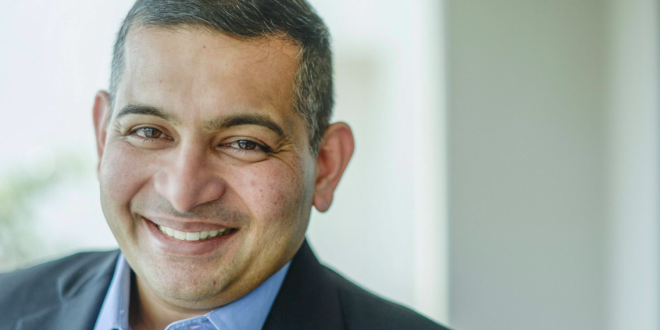
How important are payment methods and speed of payment processing important for customer experience in online sports betting?
We talked with Sujit Unni, Chief Technology Officer at Paysafe, which had conducted a survey among US punters. He provided insightful and detailed answers on this and several other questions.
Read on for some fascinating perspectives on the past, present and future of the payment process and its role in online sports betting.
Q. Let’s start with the recent survey that Paysafe conducted among US sports bettors. What are the key takeaways from the survey?
A. Here are some of the conclusions we came to after surveying sports bettors in eight regulated US states:
Available payment methods influence players’ decision to use a brand: To fully capitalize on the growing opportunity of online sports betting, sportsbook operators should strongly focus on the player experience at the checkout. The payment methods that are available and the security of said methods are critical for players when it comes to evaluating which brand they choose to place their bets with.
Transaction security factors highly into choice of sportsbook: When asked to identify which criterion was most important when depositing funds with a sports-betting brand, bettors said the security of the transaction was more important than any other characteristic.
Easy and fast payments are critical: Just as important to players is the speed and ease with which they receive their winnings when they wish to cash out. According to four fifths (79%) of US sports bettors we surveyed, they have a negative impression of the sportsbook when their expectations related to cash out speeds aren’t met. This can result in the sportsbook taking a large reputation hit. A poor reputation spreads among players and can result in a significant brake on its growth.
The online sportsbooks themselves must be fast and efficient: It’s important to make sure the sportsbook’s payment platform is moving quickly and efficiently. The easier it is for a player to access payouts, the more likely they will be to continue using the platform. Those who adapt to these demands will position themselves well for significant growth.
Q. Everybody talks about the speed of payments. How does speed factor into the mobile process as a whole, and how does it contribute to the overall success of an online business, especially an iGaming business?
A. iGaming is changing more rapidly right now than ever before. Mobile’s role in this evolution is huge, given apps’ potential for speed and the strong relationship we’re able to build with end-users: We’re right there, in their pockets, whenever they pick up their phone.
But proximity alone is not enough. End-users will grow bored or burnt out if their experiences are slow, or if we’re not constantly offering new experiences and improving what’s already available.
Increasing the speed of our processes and the user experience is critical in that every second of load time anywhere within the app literally costs every company money, especially in iGaming, which is less of a considered purchase than traditional mobile shopping or eCommerce. iGaming customers are making fluid, real-time decisions; the more time they have to wait to get to the next step, the less patient they become and the more likely they are to drop off.
Speed is a function of many factors, and there are a number of processes that power the payments experience. We work with mobile DevOps platform Bitrise to increase the speed of all of the mobile processes that power the user experiences leading up to and including payments, as well as the behind-the-scenes operational processes that influence our ability to release updates to the app stores more frequently and faster.
The payments part of the mobile process is a particularly expensive place to be slow. Out-pacing competitors in that process is what’s creating the winners in this space.
Q. What are the ways by which Paysafe tries to accelerate its mobile processes and e-payments?
A. If you look at it from a very high level, the two primary ways we accelerate our processes and e-payments are through having the best talent and technology.
We stay competitive on the talent side by attracting and – just as importantly –
retaining the best people in the world in this space. We have been able to build on their expertise to constantly improve the speed at which we deliver value for merchants and consumers alike.
When you are investing in this level of talent, it’s important that you are not wasting their skills on things like troubleshooting, waiting around hours to test builds, or doing manual fixes to problems that could be automated. So, on the technology side, our mobile engineering teams use Bitrise to test all new code, reduce build times from hours to minutes, identify issues that might interfere with the user experience, and so on, before submitting releases to the app stores.
Our goal is to always do everything as fast as possible, without sacrificing our standards of quality and security.
Q. It looks like the ‘slow and steady’ will not win the races anymore. But could the focus on speed–especially in payment processing–be detrimental to the fraud-prevention measures?
A. Building on my last answer, it’s imperative to not sacrifice security to save time. I will say that one of the upsides of investing in technology like Bitrise is that it allows us to get the best of both worlds: Speed and security. In our mobile engineering processes, for example, Bitrise allows us to automatically run a number of security tests and checks that were previously slow, manual labour. Now they take up less time, are more consistently executed, and actually free up the team to work on innovations for our merchants and consumers. That’s not to say that there aren’t manual checks involved anymore, but those are fewer and more meaningful.
Q. Could you talk about the recent innovations that Paysafe brought to the payments ecosystem?
A. Given the nature of our business we are constantly evolving our value proposition and anchor around our philosophy of customer outcomes. We tend to think of innovation around key pillars including:
- Evolving our business to be a true cloud-based platform that supports multi-sided markets. This allows existing customers and merchants to access new features and stay engaged with our platform. The recent introduction of Openbucks, a product that allows store gift cards to be used at point of sale at other merchants in the Paysafe network, benefits customers who can now use restricted gift cards across a wider merchant base, and allows our merchants to accept a non-traditional payment method.
- Building out hybrid-business models with the wider finance eco-system through the launch of capabilities like pop-up banking with traditional banks like TSB. While serving as a revenue stream, this also allows banks like TSB to optimize their branch footprint and enables customers to access simple transactions using the Paysafe network.
We have also spearheaded a suite of embedded finance offerings with partners like Amazon and Google. Our offerings of cash to digital, digital wallets and processor agnostic payment methods makes us one of the few firms that can offer industry specific open loop and closed loop solutions.
Q. Allow me now to bring a customer perspective. What benefits do companies, especially those in the iGaming sector, gain from integrating the accelerated payment solutions of Paysafe?
A. Given our “born in gaming” origins, we believe we are one of the few payment platforms in the market that has a full suite of solutions to support both store based and online operators. This means our combination of brick and mortar, wallet, and cash solutions allow customers to seamlessly transact and play across the in-store and online offerings of our gaming merchants.
Solutions like our single integration API give our gaming merchants access to payment processing platforms that are accessible in multiple geographies through different processors, a host of local payment methods and a global network of banks. This in effect improves the customer experience and reduces revenue losses from declined transactions.
Effective risk and fraud management is a key differentiator, given the deep expertise and geographical coverage we provide the industry. Our investment in our risk and fraud infrastructure protects both merchants and customers while ensuring a seamless payments experience.
Q. The new technologies in the payment space have blurred the boundaries of national currencies to an extent. What are your thoughts on the influence of the laws and regulations of different countries on the growth of payment processes, especially for a highly regulated industry like iGaming?
A. The world is definitely a smaller place from a payments perspective today than it was five or six years back, largely enabled by the rapid adoption of disruptive technologies like blockchain, API driven ecosystems, and standardization of messaging services.
Like any financial service, payments are heavily influenced by regulation – and fortunately in a good way for the most part. Governments have been quick at recognizing how critical a scalable and democratized payments infrastructure is to drive economic growth and, as a result, we see regulation being enacted in in many markets. This is helping build out global payment ecosystems – for instance, UPI in India, Open Banking in Europe, or FedNow in the US. As this ecosystem continues to evolve, we see the emergence of trends like pay by bank and local payment methods continuing to grab market share from the card schemes, which will benefit both consumers and merchants.
iGaming is still in its infancy and, in certain markets like the US, can ride this wave of an open payments ecosystem to provide a far superior experience to its customers. Regulation in gaming is still evolving and it will look to more mature markets in Europe for insight as it starts to put in place legislation for the industry. Paysafe is leveraging its established presence in the EU to bring insight and product offerings to the US market that allow our gaming partners to not only grow their business in line with established legislation but also to build and offer products that consider future legislation that we think could be enacted.
Q. What is your take on the growth of mobile payments over the last few years?
A. Smartphones are a part of our daily lives today and are to a large degree considered indispensable. In the few years leading up to the pandemic, we were already seeing steady growth in mobile payments. The onset of the pandemic accelerated that growth by as much as 75% in some segments.
Some of the key drivers are:
The influence of digital transformation: As industry sectors, particularly financial services, have increasingly been disrupted and transformed, the mobile phone has emerged as an important customer engagement channel. As customer behavior matured to using mobile phones as a transaction medium, the need to support payments drove adoption.
The rise of emerging digital economies: The other big influence was the rise of emerging economies. India, for example, had a head start in becoming a digital economy with its population armed with mobile phones before they even had access to desktop computers. Countries like India that are supported by digital friendly government regulations, have a large unbanked population and an industry that’s very willing to provide payment and banking solutions, witnessed exponential growth in mobile payments.
Apps, wallets, and subscription services: As the number of apps hosted on Apple and Android platforms grew, people are increasingly using mobile phones to purchase a range of services, from buying tickets to ordering rides and subscription services. This adoption led to the creation of a full payment supportive ecosystem, including wallets (Apple Pay, Google Pay, and our own Skrill digital wallet, among others) and emerging payments volumes driven by a growing library of subscription services.
Payments continue to become easy and reliable: Having a credit or a debit card used to be the only way to make a payment on a mobile phone. However, payments have evolved to keep up with the emerging digital landscape. Today beyond these traditional payment methods, customers can pay with their bank accounts, cash, and by using over 200 local payment methods specific to geographies –which has democratized payments. That coupled with regulation to promote open banking systems and reliable real-time payments as well as faster payment infrastructure has helped drive the surge of mobile payments.
Increasingly secure and safe transactions: Wherever there is a financial transaction there is also the risk of fraud. Because of this, mobile phones have evolved to continually make transactions both convenient and safe. Whether it’s by using face ID, biometrics or contactless payments, the ability of the manufacturers to deliver secure payments was critical in driving the wider adoption of mobile payments.
Q. Let’s conclude with something about the future. Could you reveal some of the changes that you foresee coming in the mobile space? What about the payments sector?
A. With app store operators seeing pressure from governments around the world to loosen their grips on the mobile ecosystem – especially in terms of payments – we expect to see some massive changes soon.
Alternative app stores that allow more app choices for end-users and more payment processing choices for app store publishers are benefitting both merchants and consumers.
Additionally, we expect the consumer’s need for speed to increase even further, widening the divide between those businesses that can deliver on this expectation and those that can’t.
We’re confident that, between the talent of our team and partners like Bitrise, we’ll land on the right side of that divide.
Powered by WPeMatico
Baltics
HIPTHER Community Voices: Interview with the CEO and co-founder of Nordcurrent Victoria Trofimova
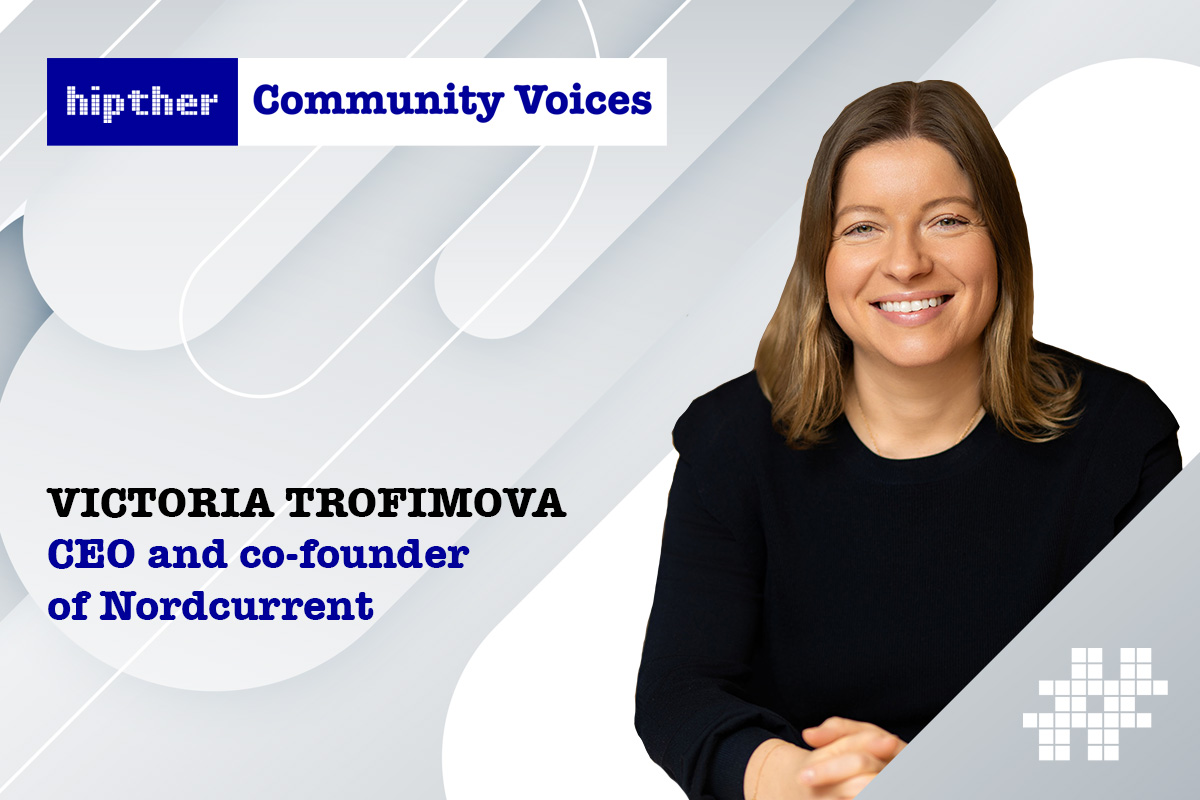
In this edition of HIPTHER Community Voices, we talk with Victoria Trofimova, the CEO and co-founder of Nordcurrent, the biggest game studio to come out of Lithuania and the Baltics. Since starting the company in 2002, Victoria has led Nordcurrent from a small team to an international gaming success story — all without external funding.
She shares how key decisions like focusing on mobile games, building a diverse team, and staying true to their creative vision helped shape Nordcurrent’s growth. We also dive into how she’s helping put the Baltics on the global gaming map, supporting young talent, and what advice she has for the next generation of women leaders in tech.
Nordcurrent has grown into a Baltic powerhouse since its founding in 2002. What were some of the pivotal moments that shaped the studio’s identity and success—especially as a bootstrapped company?
One key moment was our decision to focus fully on mobile gaming early on. That shift, around 2010, allowed us to scale globally with titles like Cooking Fever, which became a long-term success story. Another pivotal step was building and retaining in-house capabilities, from development to marketing, while staying self-funded. Being bootstrapped taught us discipline, resilience, and how to make bold yet thoughtful decisions without external pressure.
You’ve scaled a 360-person team across multiple countries. What have been the biggest challenges—and advantages—of growing Nordcurrent without external funding?
The biggest challenge has been growth pacing. We had to build sustainably, without shortcuts. But that’s also been our advantage; we’ve kept creative control, built long-term trust with our team, and stayed focused on profitability and product quality. It’s a different rhythm, one that favors deep thinking over hype.
Diversity in gaming is still lagging behind. What concrete steps has Nordcurrent taken to drive inclusion, and how do you embed this into studio culture, hiring, and leadership?
We don’t overcomplicate it, we hire the best people who want to build great games with us. We don’t separate or label by gender, background, or title. If someone brings talent, drive, and a collaborative mindset, they belong here. That approach has naturally led to a diverse team, including strong female leadership across departments. We focus on creating an environment where everyone is treated equally, trusted, and heard.
You’ve spoken about attracting global talent to Lithuania and the Baltics. What makes the region appealing—and what misconceptions do you often have to overcome when recruiting internationally?
The Baltics offer a great work-life balance, strong tech ecosystems, and a tight-knit creative scene. But we still need to overcome outdated perceptions; for example, that it’s cold, isolated, or lacking opportunity. The truth is, Vilnius and other cities here are dynamic and are increasingly being recognized for innovation.
In such a saturated gaming market, how does Nordcurrent approach innovation and stay relevant without falling into trend-chasing?
We listen deeply. To players, to data, and to our instincts. With over two decades of experience, we’ve built a rich internal library of what works, what lasts, and what connects. Innovation for us isn’t about reinventing the wheel every time. It’s about layering insight, emotion, and cultural nuance onto strong foundations. We don’t chase trends, we ask how a game fits into people’s lives. That’s why titles like Airplane Chefs resonate. They’re familiar yet fresh, culturally rich but globally accessible. Years of learning has given us the confidence to trust our gut and the clarity to know when to try something bold.
From mobile hits to console and PC publishing—how has your portfolio strategy evolved, and how do you decide what kinds of games to invest in today?
Our mobile success gave us the freedom to diversify. With Nordcurrent Labs, we now publish PC and console games that align with our values: original IP, strong storytelling, and long-tail potential. We look for teams with vision and grit, whether it’s cozy games or narrative-rich adventures.
You recently acquired River End Games and the Cinemaware catalog. What’s the strategic thinking behind those moves, and what can players expect from these legacy properties going Forward?
River End Games brings deep narrative talent and AAA craftsmanship, which complements our publishing ambitions. With Cinemaware, we’re reimagining classics for a new generation. These acquisitions aren’t about nostalgia only, they’re about unlocking untapped creative value in ways that feel both respectful and bold.
How are you helping to nurture the next generation of game developers in the Baltics, and what role do you think studios should play in education or early talent development?
We take this responsibility seriously. As the largest Lithuania-born game developer, we feel a strong duty to help grow the industry, not just our studio. We actively collaborate with the Lithuanian Game Developers Association, support local game jams, and organize major meetups that bring the community together. Our goal is to make the gaming industry more visible, more accessible, and more appealing, especially to young people who may not yet see it as a real career path.
It’s not just about hiring talent, it’s about helping to create it. We believe studios should take an active role in popularizing the industry, opening doors, and building a future where game development is seen as a creative and respected profession.
You’re leading a company that’s rooted in Eastern Europe but competing on a global stage. How do you balance local values with global ambitions?
We don’t see it as a conflict. Our roots give us authenticity and resilience, and these are qualities that resonate globally. We build games that are grounded in strong craft and cultural richness but are universally relatable. Staying true to who we are has been our best strategy for going global.
And finally—what advice would you give to aspiring women leaders in tech and gaming who want to break into this industry and rise through the ranks?
Own your voice. You don’t need to fit a mold to lead. Surround yourself with people who challenge and support you. And remember, leadership isn’t just about a title, it’s about taking responsibility, lifting others, and staying curious. Tech and gaming need your perspective, and there’s room for you at the table.
The post HIPTHER Community Voices: Interview with the CEO and co-founder of Nordcurrent Victoria Trofimova appeared first on European Gaming Industry News.
Interviews
Portrait of a Fraudster Then and Now: How Scammers’ Habits and Tactics Are Changing
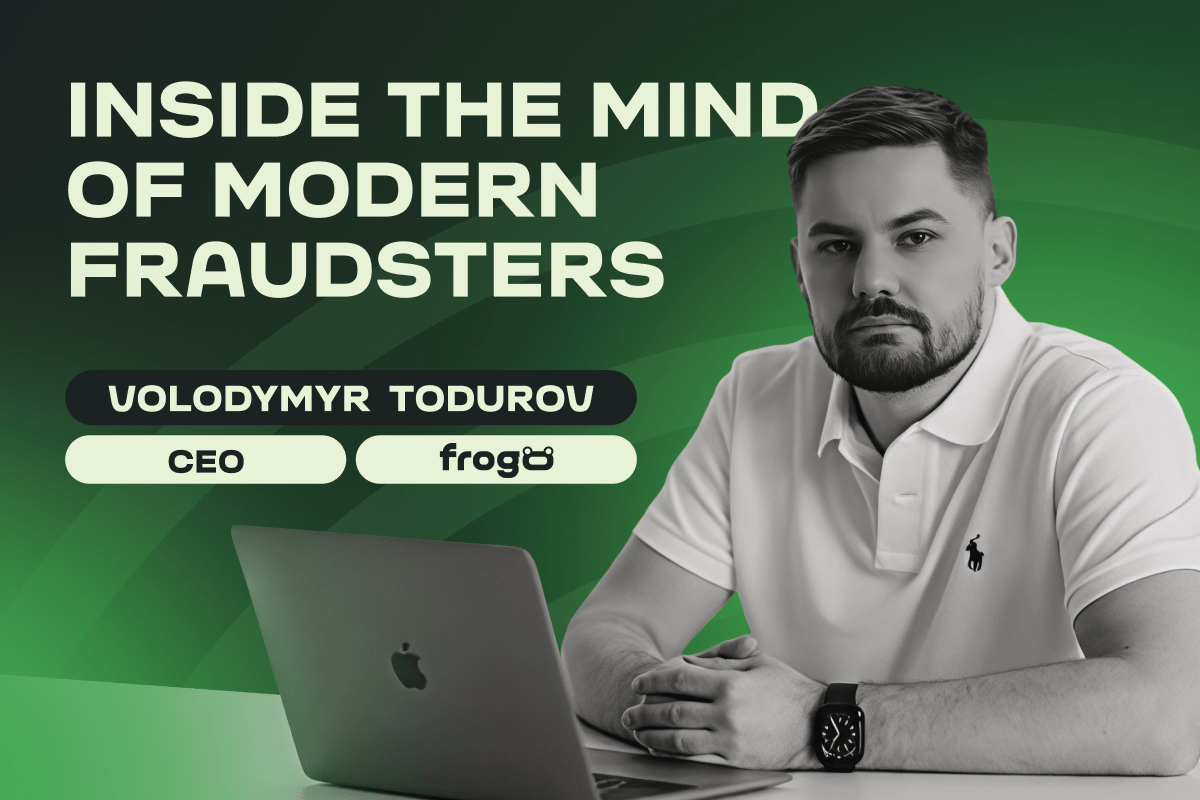
Fraud in the iGaming sector is no longer the work of lone opportunists. Today’s scammers operate in well-organized, tech-savvy networks – quietly exploiting systems that weren’t built to catch them. And as the digital economy grows, so too does the complexity of fraud schemes targeting gaming operators.
Amid this evolving threat landscape, Frogo has emerged as a company redefining how fraud prevention should work. We spoke with Volodymyr Todurov, CEO at Frogo, to get an inside look at how fraudsters are changing their tactics – and what operators can do to stay ahead.
Fraudsters evolve fast – how does your system stay one step ahead without overwhelming teams with false alarms?
Absolutely, the landscape of fraud is constantly shifting and staying ahead requires more than static rules. At Frogo, we’ve developed a dynamic system that adapts in real-time to user behavior and transaction contexts. Our platform learns from both fraudulent and legitimate activities, enabling it to distinguish between the two more effectively. This approach reduces false positives and ensures that our clients’ teams can focus on genuine threats without being bogged down by unnecessary alerts.
Can you walk us through a real-world case where your platform uncovered a fraud scheme traditional tools missed?
Absolutely. One notable case involved a large-scale bot attack targeting SMS-based fraud vectors. Initially, our standard device ID-based defenses helped neutralize the first wave of the attack. However, the adversaries quickly adapted, altering their emulation tactics to bypass traditional checks. At that point, conventional methods were no longer sufficient to detect the evolving fraud.
We responded by implementing a dynamic anomaly detection framework. This involved redefining detection signals in real-time using IP intelligence and deep device fingerprint attributes – areas where our proprietary data collection algorithms provided a significant edge. By anchoring detection logic to more granular and resilient signals, we were able to recalibrate thresholds dynamically, ensuring legitimate users weren’t impacted.
The results were decisive: bot attack efficiency dropped sharply from over 80% to just 3.5%.
What’s something about fraud detection that most businesses get wrong? And how does Frogo challenge that?
A common pitfall we see is operational rigidity – many businesses rely on static rules and general-purpose triggers that result in high false positive rates. This not only burdens anti-fraud teams with unnecessary manual reviews but also degrades the experience for legitimate users, especially loyal or VIP customers.
For example, it’s typical to see blanket rules like “manually verify all payouts over X euros.” While that may seem prudent, in reality it’s inefficient. It overlooks low-value, high-frequency fraud – such as bonus abuse – and disproportionately flags legitimate high-value players.
At Frogo, we take a different approach. Our system adapts rules dynamically based on customer behavior and segmentation. A trusted VIP user with a long-standing reputation shouldn’t be reviewed multiple times a day. But if a wave of new €5 accounts starts exhibiting bonus-hunting behavior, they should run immediate scrutiny – regardless of transaction size.
By aligning detection logic with behavioral context and player reputation, we reduce noise, increase fraud catch rates, and protect real users from unnecessary friction.
How does Frogo automate risk logic without sacrificing the flexibility businesses need to reflect their unique policies and traffic patterns?
At Frogo, we don’t see automation and customization as opposing forces – they operate in different dimensions. Our focus is on automating the customization of risk and scoring policies in a way that respects each client’s specific risk appetite and user behavior.
We achieve this through dynamic triggers. Rather than hardcoding arbitrary rules – like “five failed top-ups per minute equals fraud” – we apply adaptive scoring thresholds that align with real-world usage patterns.. For example, our system might detect that, for a certain payment method and user segment, more than 1.3 failed top-ups per minute is statistically anomalous – because it exceeds the 98th percentile of historical behavior.
But that same trigger adjusts automatically. If the next day a payment provider experiences a technical issue and normal users start retrying more often, the threshold might shift to 2.7. What was anomalous yesterday may no longer be today – and our system adapts accordingly to reflect evolving traffic patterns.
As a result: the clients retain full control over their risk strategy, while Frogo ensures their policies scale efficiently, adapt in real time, and minimize false positives – even in volatile traffic conditions.
Beyond detection – how does Frogo help companies investigate and understand fraud at a strategic level?
Detection is just the beginning. Frogo’s graph-based forensic tools and AI models provide a comprehensive view of the relationships between accounts, transactions and behaviors. This allows companies to identify patterns and vulnerabilities that might not be apparent through traditional analysis. Our analytics layer offers insights into trends and forecasts, enabling businesses to understand the broader context of fraudulent activities and make informed strategic decisions to mitigate future risks.
Fraud might be getting smarter, but so are the solutions built to fight it. Platforms like Frogo are helping operators move beyond reactive security measures and into a space of strategic, data-informed defense. In an industry where trust is everything, that shift might just be the difference between staying one step ahead – or falling behind.
Disclaimer: Frogo’s fraud prevention solutions are developed in full compliance with applicable data protection laws, including GDPR. All behavioural analysis is performed on anonymised or aggregated data, with full transparency and control provided to our clients.
The post Portrait of a Fraudster Then and Now: How Scammers’ Habits and Tactics Are Changing appeared first on European Gaming Industry News.
Interviews
Inside the Matrix: A Conversation with EveryMatrix Founders on Europe, Expansion, and Staying Hands-On
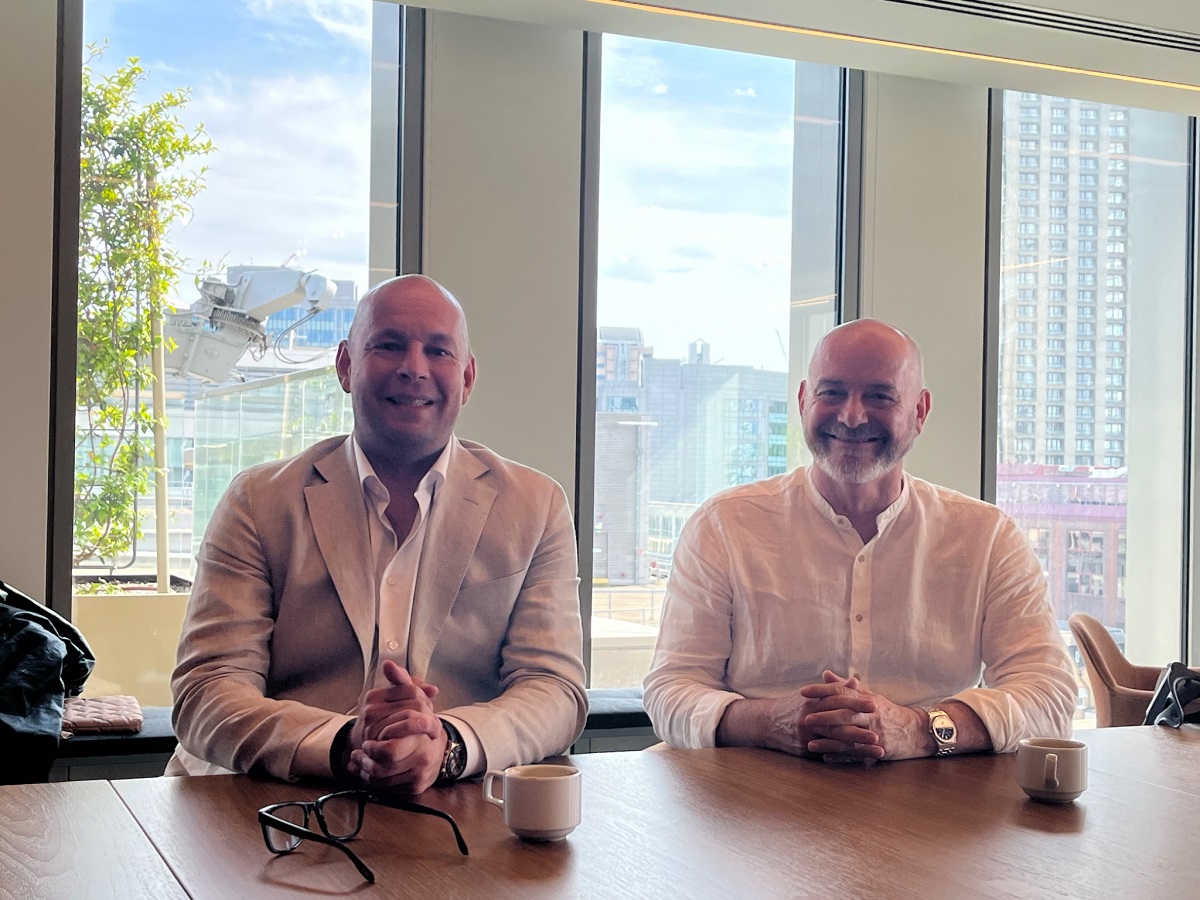
By Maria Emma Arnidou, Event Marketing Director at HIPTHER, for the European Gaming Media
During the recent EveryMatrix Media Day at the company’s opening of their new London office, Co-Founders Ebbe Groes (CEO) and Stian Hornsletten sat down with press to share key insights into their strategic vision. In this exclusive Q&A, we explore their views on the European Market, the evolution of EveryMatrix’s business model, leadership philosophy, and the company’s experience in the ever-evolving U.S. market.
Europe is filled with local heroes. It’s far more fragmented than most people think.
You discussed emerging markets in your presentation. What about Europe – is it considered saturated, or are there still areas of growth?
Ebbe Groes: I really don’t think Europe is saturated at all. In fact, big parts of it are still underdeveloped. Take France for example, it doesn’t allow online casino. Germany has effectively banned it. That’s two of Europe’s three largest economies where casino is either outlawed or nearly impossible. So yes, there is still plenty of room for growth.
Stian Hornsletten: And the market is getting more concentrated around a few bigger players, but even then, it’s not as centralized as in the U.S.
Ebbe Groes: Exactly. Europe is filled with local heroes. You won’t find many players dominating across the board. Kindred, Betsson – they’re strong, but when you go country by country and look at market share, the picture is very fragmented. Even with the economies of scale in marketing – say you sponsor a Premier League team – you’re still not getting the full return unless you’re present across multiple markets. That’s what makes Europe so different from the U.S., where a few big players hold all the cards.
We started with a sportsbook. Now we’re building an ecosystem.
EveryMatrix today operates across multiple verticals with a deeply diversified portfolio. Was this the vision from the start, or did it evolve as the company grew?
Stian Hornsletten: The vision definitely evolved quickly as we grew. We started with OddsMatrix, a B2B sportsbook product that was meant to be an off-the-shelf, managed solution – something that didn’t exist back then. Within a year, we had already expanded into turnkey and PAM solutions. By 2010–2011, we had launched the CasinoEngine and started specializing in product verticals.
We’ve always been very innovation-driven. We keep developing new products – some of which are still under wraps – and R&D remains one of the most exciting parts of what we do. Today, most of our top 10 clients are turnkey. While we still offer standalone modules, our growth has come from cross-vertical synergy.
Despite this scale and complexity, you both remain deeply involved in the company’s day-to-day operations. How do you manage to stay on top of everything across products, people, and processes?
Ebbe Groes: It helps that we’ve been here from the start. I wouldn’t want to be hired into this role now and try to learn everything from scratch – but I’ve had 18 years to absorb it all. We’ve built the company in a way that each vertical operates almost like its own business. For example, the sports division has its own CTO, product team, trading team, and even its own support function. That independence gives us breathing room.
It allows me to focus on high-level strategy, like acquisitions – take FSB, for instance. That required a lot of focus at the start, but eventually it will transition into the core business and require less direct involvement.
Stian Hornsletten: Over the years, we’ve also developed strong planning, reporting, and KPI structures across the business. That consistency makes it easier to monitor everything and integrate new divisions. Whether we open a new office or onboard a new team, we already have the systems in place to support them.
Ebbe Groes: And the same goes for finance and HR. When we opened the London office, the HR team already knew how to handle it – we’d opened three the year before. That kind of maturity allows us to move fast without creating chaos.
“In Europe we have 150 competitors in content; in the U.S., maybe 10.”
And what about the U.S. – a market many see as the holy grail of iGaming? What’s your current position there?
Ebbe Groes: To be honest, the U.S. was a tough lesson. We entered hoping to provide a full turnkey solution, but the market didn’t evolve the way we expected. Many well-funded B2C operators pulled out, and that left little demand for companies like us to offer the full stack. We pivoted to focus on one thing: our own gaming content.
Stian Hornsletten: We’re now live in four out of five regulated U.S. states for our own content, and we have agreements with all the major operators. Some new games from SlotMatrix are set to launch by summer, and they’ve already shown strong performance elsewhere – which gives us hope. If we manage to capture even 1–2% market share with our own content, that would already be meaningful.
But it’s been a long and costly process. Every state has its own regulatory requirements, separate hosting, and certification needs. And if one state’s not ready, operators won’t promote your games nationally. It’s frustrating, but it also reduces competition. In Europe we have 150 competitors in content; in the U.S., maybe 10. So if we can endure, there’s long-term potential.
The post Inside the Matrix: A Conversation with EveryMatrix Founders on Europe, Expansion, and Staying Hands-On appeared first on European Gaming Industry News.
-

 AGCO5 days ago
AGCO5 days agoAGCO Fines Great Canadian Casino Resort Toronto $350,000 for Serious Regulatory Violations Linked to Impromptu After-Party on Gaming Floor
-

 Africa5 days ago
Africa5 days agoALA Hosted Seminar on Artificial Intelligence and Cybersecurity
-

 Canada5 days ago
Canada5 days agoIGT and Atlantic Lottery Sign Eight-Year Video Lottery Central System Technology Agreement
-

 Latest News5 days ago
Latest News5 days agoUnlock Top-Tier Deals and Careers: Parimatch joins iGB L!VE 2025
-

 Africa4 days ago
Africa4 days agoDRC Signs MoU for Public-Private Partnership with Burundi’s East African General Trade Company
-

 Blokotech6 days ago
Blokotech6 days agoBlokotech unveils Cristian Tonanti as new Casino Partnership Manager
-

 First5 days ago
First5 days agoFIRST and Genius Sports Extend Landmark Data Partnership, Powering Continued Growth
-

 Brazil6 days ago
Brazil6 days agoEsportes da Sorte holds forum on “Integrity in Sports” with Ceará and Náutico

















